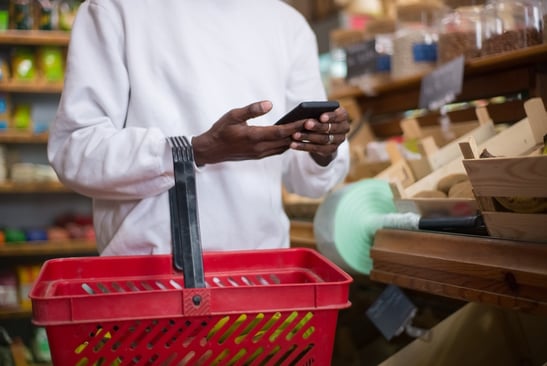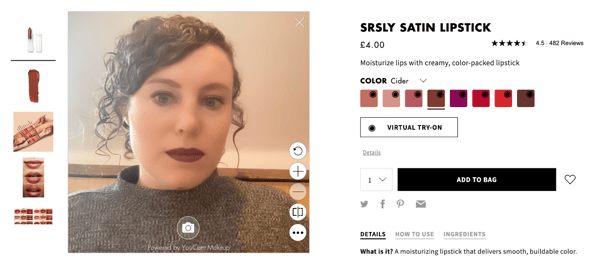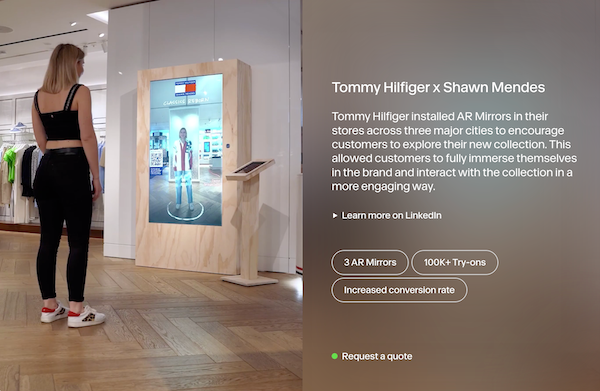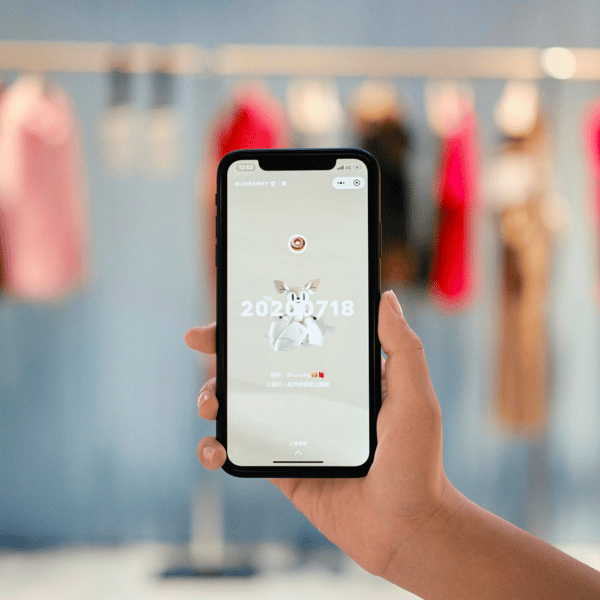When Digital Meets Physical: 6 Omnichannel Commerce Technologies Driving Customer Engagement
Written By: Lizzie Davey
The buying journey is no longer linear. Instead, it follows something Google calls the “messy middle,” which involves a complicated web of touch points that’s different for every shopper.
This evolution means that shoppers now expect — not simply want — an engaging, personalized, and informative shopping experience no matter where they engage with your product or retail brand.
In fact, Salsify’s 2022 Consumer Research report found that consumers in the U.S., the U.K., Germany, and France now regularly shop across several platforms before they make their final purchasing decision.
Research by Brightpearl revealed that 90% of leading retailers either have an omnichannel strategy or plan to invest in omnichannel tech, but only 8% think they have mastered it. With customers’ demand for a seamless omnichannel commerce shopping experience, however, the race is on to gain a competitive edge.
Luckily, new technologies emerge yearly that help support the omnichannel retail experience. These powerful methods for connecting with shoppers will help you stay ahead of the curve and provide a stellar shopping experience both in-store and online.
You don’t have to go as far as Chinese ecommerce titan JD.com, which opened up the world’s first robotic shops in the Netherlands, according to CNBC, but you can use digital touch points like smart screens, interactive kiosks, and QR codes in-store to win shoppers.
6 Innovative Examples of Omnichannel Shopping Technologies
Here are some of the trending technologies making big waves in the retail world and a look at the brands that are using them.
1. Virtual Try-On Increases Conversions
Virtual try-on lets shoppers “try before they buy” — without actually going in the store. This has been particularly popular with makeup brands like Mac and e.l.f Cosmetics, which allows consumers to use their phone or laptop camera to see what different colored lipsticks, eye shadow, and concealer look like.
e.l.f Cosmetics has had huge success with this strategy. The beauty brand experienced a 200% increase in conversion rates by partnering with augmented reality beauty and fashion tech business solutions provider Perfect Corp. Together, they created an AR campaign via YouTube, where viewers can click a button that says “Try It On” beneath the brand’s in-stream ads to virtually try on products.
 Image Source: e.l.f. Cosmetics
Image Source: e.l.f. Cosmetics
2. Virtual Shopping Technologies Improve the Customer Experience
Advanced technology has made it possible for retailers to incorporate all sorts of weird and wonderful enhancements in their stores, including virtual shopping assistants that can offer personalized product recommendations, fitting room enhancements, and even smart mirrors.
The fashion platform Zero10, for example, launched an AR mirror that lets shoppers see themselves wearing a product through an interactive screen. Brands can display the screen anywhere, from a campaign poster to a store window display to a shop’s fitting rooms.
 Image Source: Zero10
Image Source: Zero10
3. QR Codes Catch Shoppers’ Attention
QR codes blew up during the pandemic and have stuck around since. Brands can place these anywhere throughout a store to give shoppers various digital touch points to find out more about products, claim coupons, or sign up for a brand’s newsletter. Alternatively, you can add a QR code to customer receipts that direct shoppers to leave a review or complete a survey.
Fashion and lifestyle magazine Marie Claire lauds clothing retailer Zara for adding a giant QR code to its display windows to promote its brand to passersby. The ad was a clever way to catch the attention of window shoppers and give customers the chance to check out the catalog without stepping foot in-store.
4. Smart Checkout Frees Up Long Lines
According to research by Nice CXone, 81% of shoppers want more self-service options, so smart checkouts are becoming increasingly popular in brick-and-mortar stores. They’re essentially checkouts that customers can use themselves to pay for products, get digital receipts, and pay via contactless methods, but they can also double up as personalized shopping tools.
Some smart checkouts go one step further to upsell products based on what a customer is buying or encourage shoppers to sign up for an email list.
The Industry.Fashion reports that the U.K. brand Marks & Spencers (M&S) implemented an on-the-spot payment option. Customers can checkout with an M&S staff member instead of queuing for a self-service or staffed till. Staff members use handheld devices to issue contactless payments that ultimately free up long queue times and create smoother in-store customer experiences.
5. Interactive Kiosks and Screens Keep Customers Engaged
Providing interactive kiosks is a great way to engage shoppers while they’re in the store. These kiosks are pretty versatile, too: They can provide personalized product recommendations, help customers learn more about your brand, and even support shoppers while they remotely place an order.
They’re also perfect for gathering customer information, including product preferences, shopping behavior, and loyalty levels.
Fashion Network reports that clothing brand & Other Stories has introduced a “vending machine” to its flagship store in Paris. Shoppers can try out a range of products from the brand’s catalog while learning more about the products through a large accompanying touchscreen. Even better, customers can find all their favorites in one place rather than having to scour the store to find what they’re looking for.
6. In-Store Apps Allow You To Stay Relevant
An increasing number of brands are designing their own apps that shoppers can use in-store or at home. This allows you to collect critical information about consumer shopping habits and stay front of mind.
Sometimes, brands use a popular existing app to reach a wider audience. Take Burberry, for example. The luxury fashion brand created a mini-program within WeChat that helps shoppers learn more about products, share user-generated content (UGC), and even accumulate a virtual social currency.
Consumers can then spend their currency to hatch and evolve a personalized animal character as they move around the store. It’s a fun way for Burberry to gamify the shopping experience and reward the most engaged customers.  Image Source: Burberry
Image Source: Burberry
The Future of Omnichannel Commerce
The wealth of accessible new technology has made it easier than ever for retailers to connect with shoppers and create seamless customer experiences. Adopting these technologies is no longer a question of “Should we do this?” It’s an absolute must if you want to gain a competitive edge, increase customer engagement, and strengthen loyalty levels in your existing customers.
As new technology continues to emerge, we can expect to see retailers getting more creative with the omnichannel experiences they create both in-store and online — but more than that, the line between digital and physical shopping will become increasingly invisible.
The Complete Guide To Omnichannel Strategy for Commerce
The commerce world is constantly changing — is your brand keeping up with shoppers’ shifting demands? Download our guide to get up to speed.
DOWNLOAD GUIDERecent Posts
Danone and Campbell’s Snacks Drive Digital Commerce With Organizational Transformation
Alcohol Ecommerce Trends and Tactics: Insights From Jack Daniel’s, Molson Coors, and Treasury Wine Estates
WD-40 and Amazon Share How To Maximize Brand Growth With Amazon Ads
Subscribe to the Below the Fold Newsletter
Standing out on the digital shelf starts with access to the latest industry content. Subscribe to Below the Fold, our monthly content newsletter, and join other commerce leaders.

.svg)